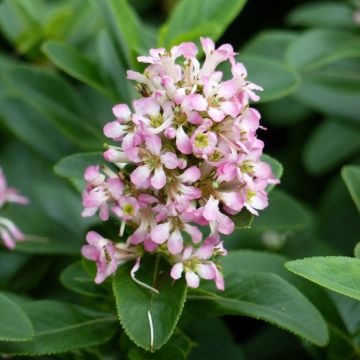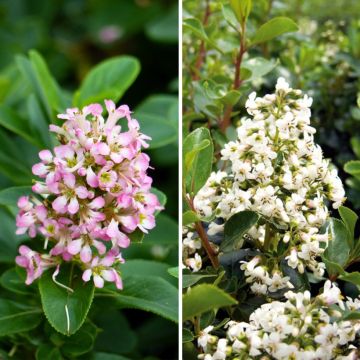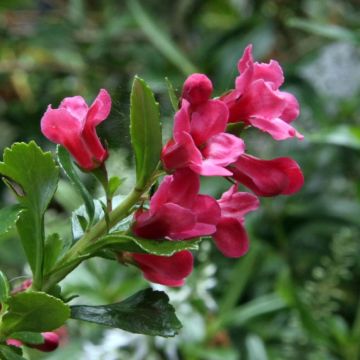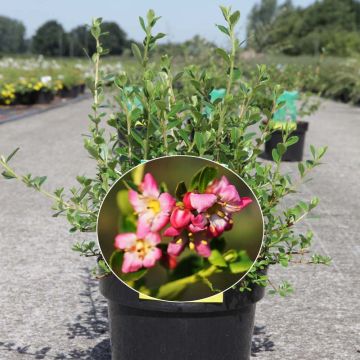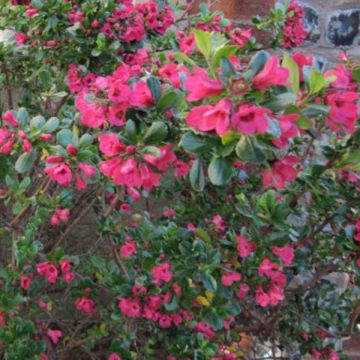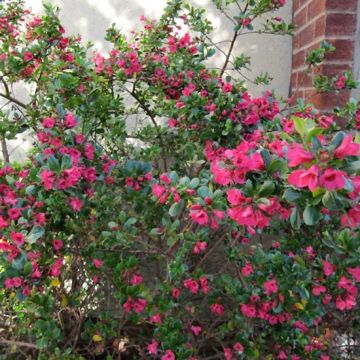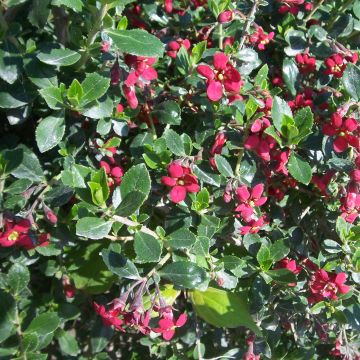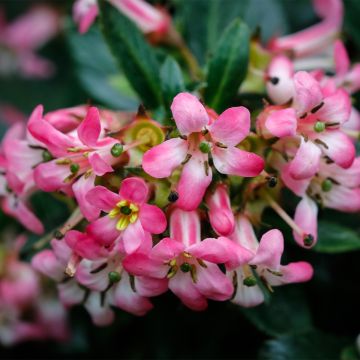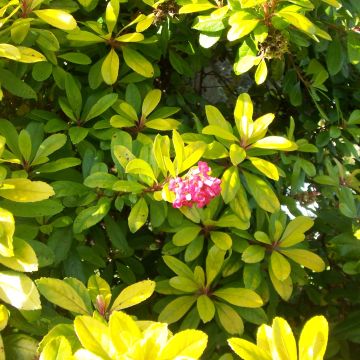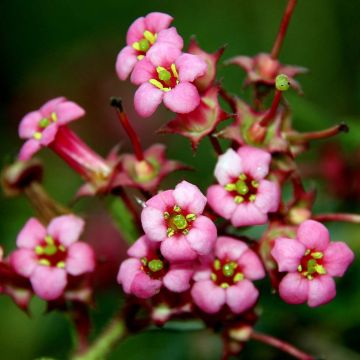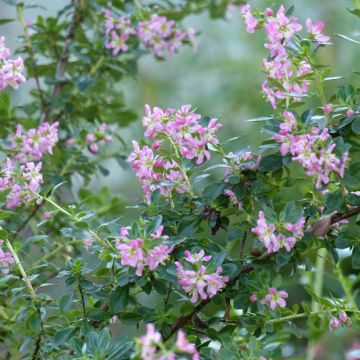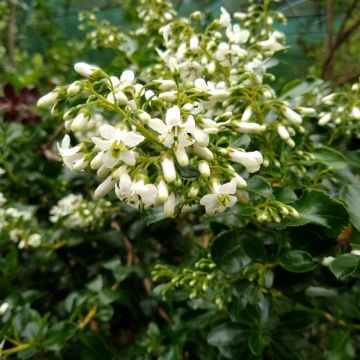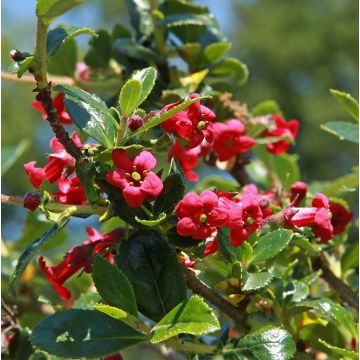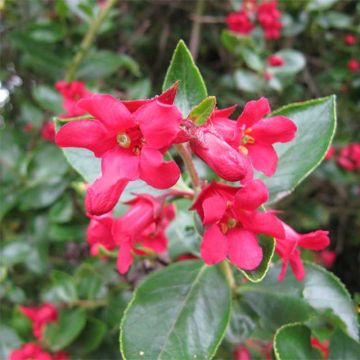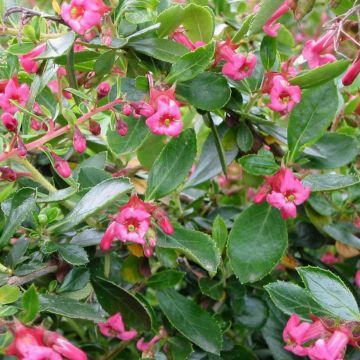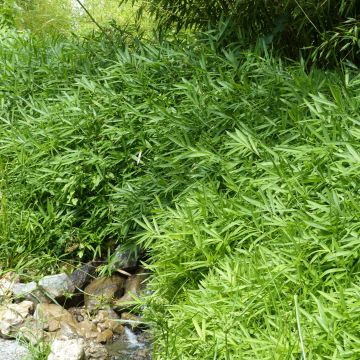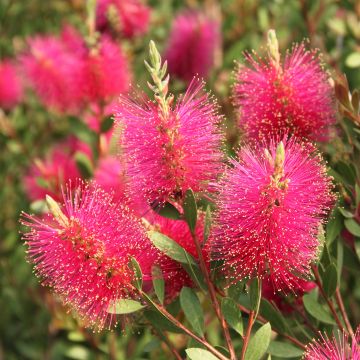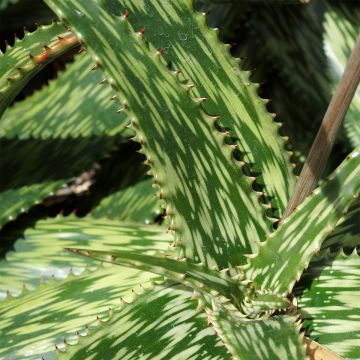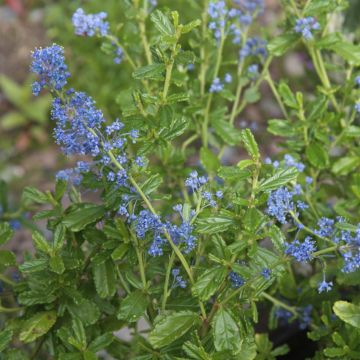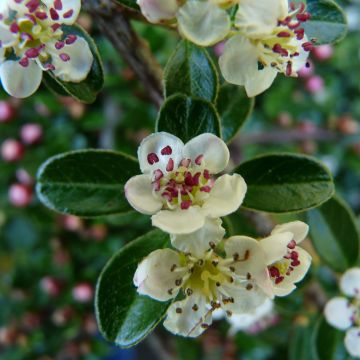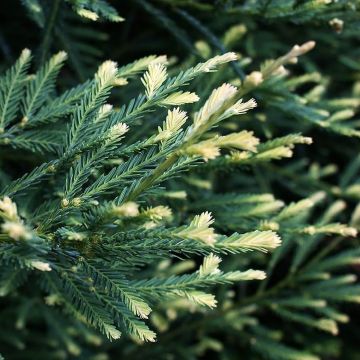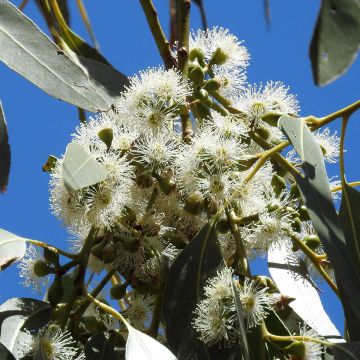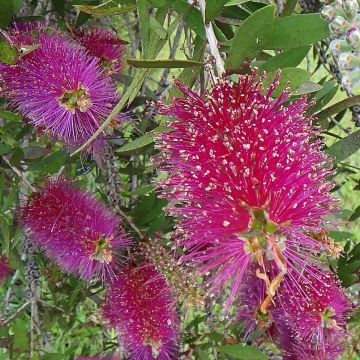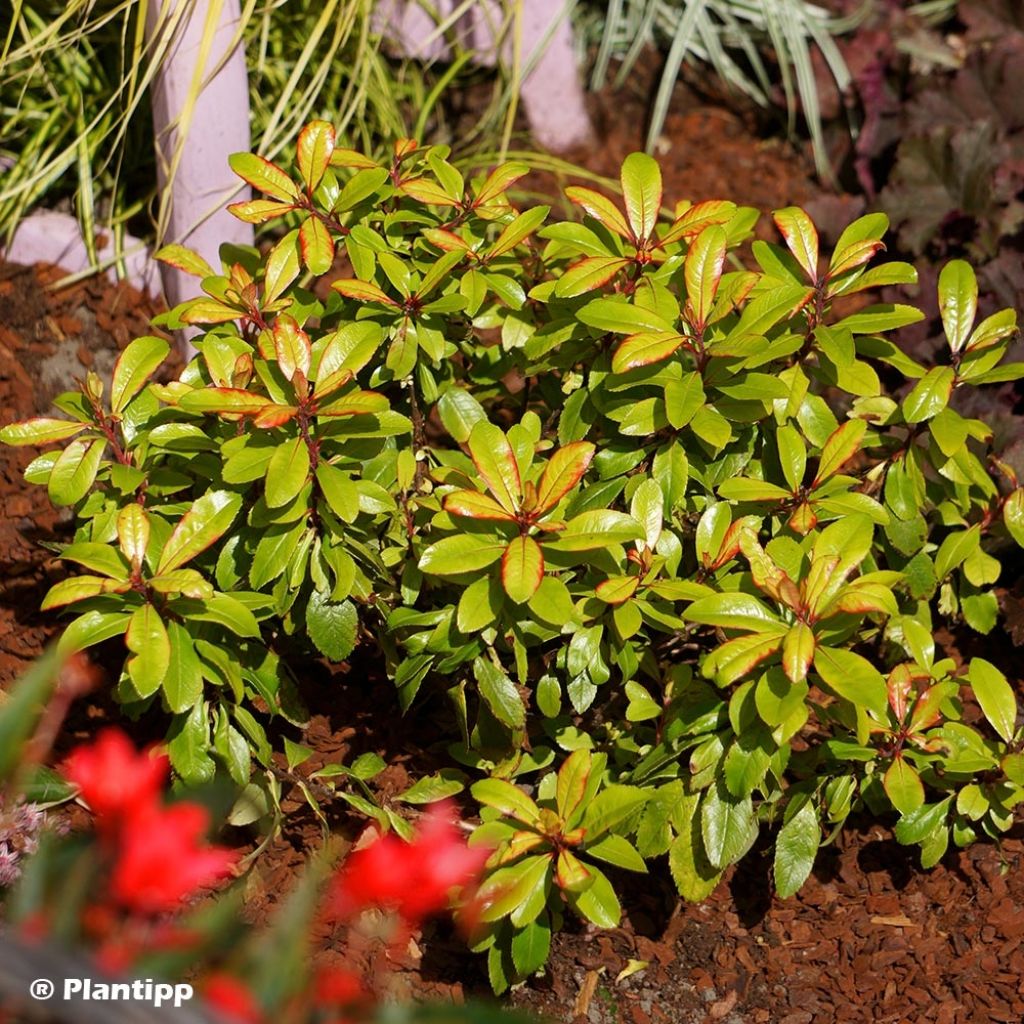

Escallonia Glowing Embers
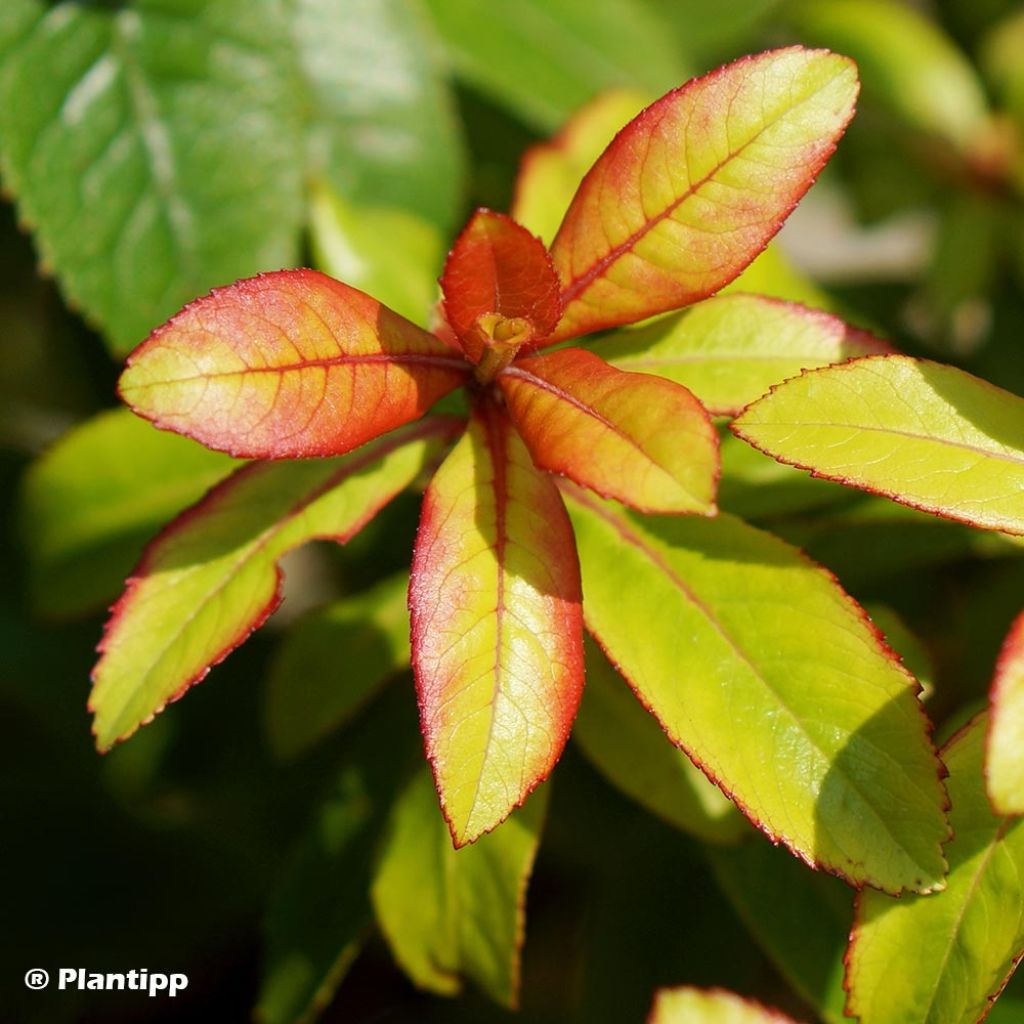

Escallonia Glowing Embers
Escallonia Glowing Embers
Escallonia Glowing Embers ('Low21')
Redclaws
Why not try an alternative variety in stock?
View all →This plant carries a 24 months recovery warranty
More information
We guarantee the quality of our plants for a full growing cycle, and will replace at our expense any plant that fails to recover under normal climatic and planting conditions.
From €5.90 for pickup delivery and €6.90 for home delivery
Express home delivery from €8.90.
Does this plant fit my garden?
Set up your Plantfit profile →
Description
The 'Glowing Embers' hybrid Escallonia is a beautiful new variety, notable for the changing colours of its luminous foliage. This small evergreen bush starts the year adorned with young red-orange leaves, as summer arrives they turn amber-yellow, serving as a backdrop to magnificent fuchsia-pink flowers. Gradually, they take on a shiny light green hue. This round and compact bush is interesting throughout the year and will be superb used in a small hedge or in a shrub bed in mild climates or by the seaside. Elsewhere, you can plant it in a pot on the terrace. Like all Escallonias, it is a rewarding bush, with fast growth, that proves to be floriferous, fragrant, and truly undemanding!
Escallonias are excellent garden plants in mild climates belonging to the Escalloniaceae family and originate from the temperate zones of South America and Chile. In nature, these bushes grow among the undergrowth covering the hillsides or on coastal areas exposed to sea spray.
The 'Glowing Embers' Escallonia is a recent hybrid horticultural creation. The bush forms a rounded dome, with a highly branching and bushy habit, of medium to slow growth, reaching about 1m (3 ft 4 in) in height at maturity with a similar spread. The young shoots of this variety emerge red-orange, then turn golden yellow to amber-yellow as they unfurl. Its evergreen leaves are 2.5cm (1 in) long, leathery, alternate, ovate, with dentate edges, ranging from medium to light green, and very shiny. Flowering takes place from June to August, for about two months, earlier or later depending on the climate, sometimes as early as May in hot climates. A short cluster composed of small five-petaled tubular bell-shaped flowers, enclosed at the base in a purplish pink calyx, appears at the tip of some branches.
Escallonias are excellent substitutes for Weigelas in mild climates by the seaside, as well as in dry gardens. 'Glowing Embers' will bring a luminous touch to your shrub beds. Its modest stature is well-suited for small gardens but also for container cultivation to adorn terraces and balconies. Well-known to gardeners in Brittany, Ireland, and England, Escallonia is also comfortable in Mediterranean climates, after careful planting and regular watering for the first two or three years. It will tolerate heat and dry summers once established, or slightly chalky soils, and manages to flower even in scorching or shaded situations. It is essential in coastal gardens: its flowering, just like that of Olearias, brightens up the grey foliage of Atriplex, Bupleurum fruticosum, or Correa alba rosea, for example. In a shrub bed, it can be associated with cistus, Polygala, Indigofera, Grevillea (in neutral to acidic soil), or even with spring-flowering shrubs like compact evergreen Ceanothus, brooms (Cytisus scoparius), or Loropetalum chinense.
Report an error about the product description
Escallonia Glowing Embers in pictures
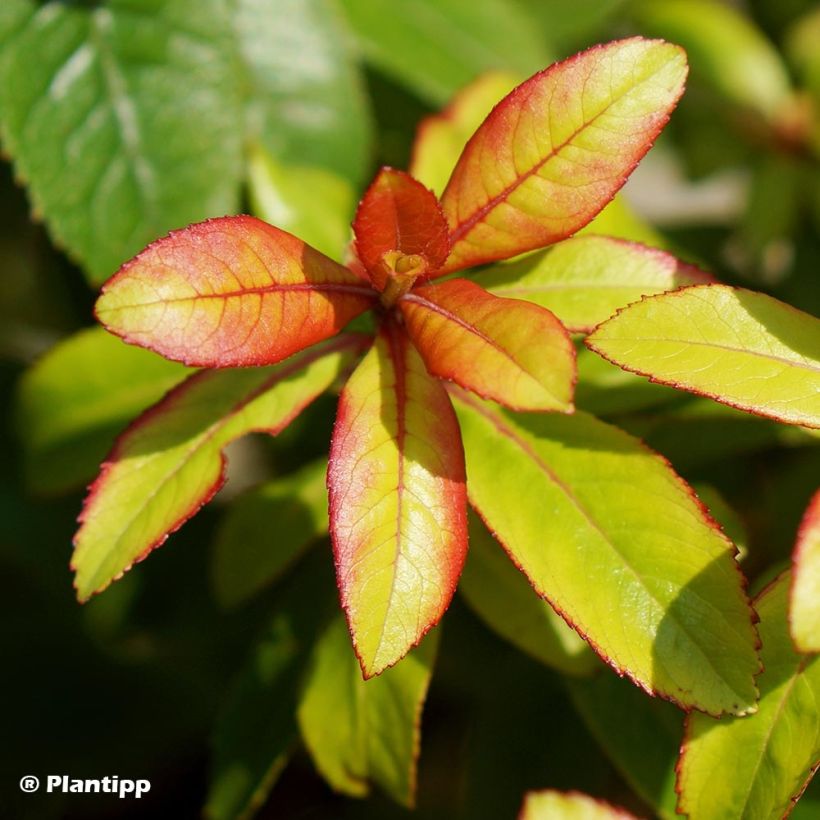

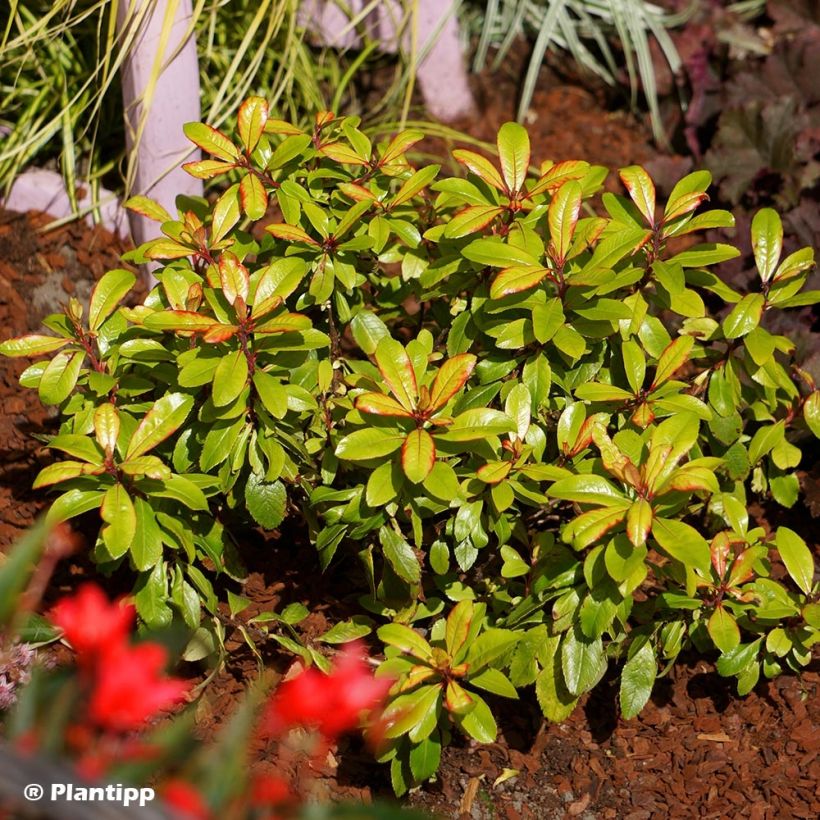

Plant habit
Flowering
Foliage
Botanical data
Escallonia
Glowing Embers ('Low21')
Escalloniaceae
Redclaws
Cultivar or hybrid
Other Escallonias
Planting and care
Escallonia Glowing Embers is best planted in spring, or in autumn in mild climates. It requires well-drained, light, moist, slightly acidic, neutral soil, or even mildly limestone, in a sheltered and warm location. It blooms more abundantly in the sun but tolerates shaded exposures well. Once well established it requires no watering in summer, even in dry climates. It can withstand sea spray but not cold winter winds. You can apply a rose fertilizer in spring if your soil is very poor. Prune to balance the silhouette in February and September. It dislikes heavy soils and stagnant moisture, especially in winter. If the soil is too heavy and chalky, it may suffer from chlorosis; if this is the case, apply a dose of sequestron annually in spring. Prune to one-third of their height in the first years so that the bush acquires a dense and compact habit. You can also prune it into a ball shape. In regions on the edge of the hardiness zone, plant it in a location protected from prevailing winds, south against a wall or west in the back of a bed or in a hedge, and mulch the base in winter. If your Escallonia has frozen in winter, it is likely to regrow from the base in spring. Elsewhere, you can cultivate it in a container to be stored in a bright room during winter, protected from severe frosts, remembering to water it from time to time.
Planting period
Intended location
Care
This item has not been reviewed yet - be the first to leave a review about it.
Evergreen shrubs
Haven't found what you were looking for?
Hardiness is the lowest winter temperature a plant can endure without suffering serious damage or even dying. However, hardiness is affected by location (a sheltered area, such as a patio), protection (winter cover) and soil type (hardiness is improved by well-drained soil).

Photo Sharing Terms & Conditions
In order to encourage gardeners to interact and share their experiences, Promesse de fleurs offers various media enabling content to be uploaded onto its Site - in particular via the ‘Photo sharing’ module.
The User agrees to refrain from:
- Posting any content that is illegal, prejudicial, insulting, racist, inciteful to hatred, revisionist, contrary to public decency, that infringes on privacy or on the privacy rights of third parties, in particular the publicity rights of persons and goods, intellectual property rights, or the right to privacy.
- Submitting content on behalf of a third party;
- Impersonate the identity of a third party and/or publish any personal information about a third party;
In general, the User undertakes to refrain from any unethical behaviour.
All Content (in particular text, comments, files, images, photos, videos, creative works, etc.), which may be subject to property or intellectual property rights, image or other private rights, shall remain the property of the User, subject to the limited rights granted by the terms of the licence granted by Promesse de fleurs as stated below. Users are at liberty to publish or not to publish such Content on the Site, notably via the ‘Photo Sharing’ facility, and accept that this Content shall be made public and freely accessible, notably on the Internet.
Users further acknowledge, undertake to have ,and guarantee that they hold all necessary rights and permissions to publish such material on the Site, in particular with regard to the legislation in force pertaining to any privacy, property, intellectual property, image, or contractual rights, or rights of any other nature. By publishing such Content on the Site, Users acknowledge accepting full liability as publishers of the Content within the meaning of the law, and grant Promesse de fleurs, free of charge, an inclusive, worldwide licence for the said Content for the entire duration of its publication, including all reproduction, representation, up/downloading, displaying, performing, transmission, and storage rights.
Users also grant permission for their name to be linked to the Content and accept that this link may not always be made available.
By engaging in posting material, Users consent to their Content becoming automatically accessible on the Internet, in particular on other sites and/or blogs and/or web pages of the Promesse de fleurs site, including in particular social pages and the Promesse de fleurs catalogue.
Users may secure the removal of entrusted content free of charge by issuing a simple request via our contact form.
The flowering period indicated on our website applies to countries and regions located in USDA zone 8 (France, the United Kingdom, Ireland, the Netherlands, etc.)
It will vary according to where you live:
- In zones 9 to 10 (Italy, Spain, Greece, etc.), flowering will occur about 2 to 4 weeks earlier.
- In zones 6 to 7 (Germany, Poland, Slovenia, and lower mountainous regions), flowering will be delayed by 2 to 3 weeks.
- In zone 5 (Central Europe, Scandinavia), blooming will be delayed by 3 to 5 weeks.
In temperate climates, pruning of spring-flowering shrubs (forsythia, spireas, etc.) should be done just after flowering.
Pruning of summer-flowering shrubs (Indian Lilac, Perovskia, etc.) can be done in winter or spring.
In cold regions as well as with frost-sensitive plants, avoid pruning too early when severe frosts may still occur.
The planting period indicated on our website applies to countries and regions located in USDA zone 8 (France, United Kingdom, Ireland, Netherlands).
It will vary according to where you live:
- In Mediterranean zones (Marseille, Madrid, Milan, etc.), autumn and winter are the best planting periods.
- In continental zones (Strasbourg, Munich, Vienna, etc.), delay planting by 2 to 3 weeks in spring and bring it forward by 2 to 4 weeks in autumn.
- In mountainous regions (the Alps, Pyrenees, Carpathians, etc.), it is best to plant in late spring (May-June) or late summer (August-September).
The harvesting period indicated on our website applies to countries and regions in USDA zone 8 (France, England, Ireland, the Netherlands).
In colder areas (Scandinavia, Poland, Austria...) fruit and vegetable harvests are likely to be delayed by 3-4 weeks.
In warmer areas (Italy, Spain, Greece, etc.), harvesting will probably take place earlier, depending on weather conditions.
The sowing periods indicated on our website apply to countries and regions within USDA Zone 8 (France, UK, Ireland, Netherlands).
In colder areas (Scandinavia, Poland, Austria...), delay any outdoor sowing by 3-4 weeks, or sow under glass.
In warmer climes (Italy, Spain, Greece, etc.), bring outdoor sowing forward by a few weeks.

































